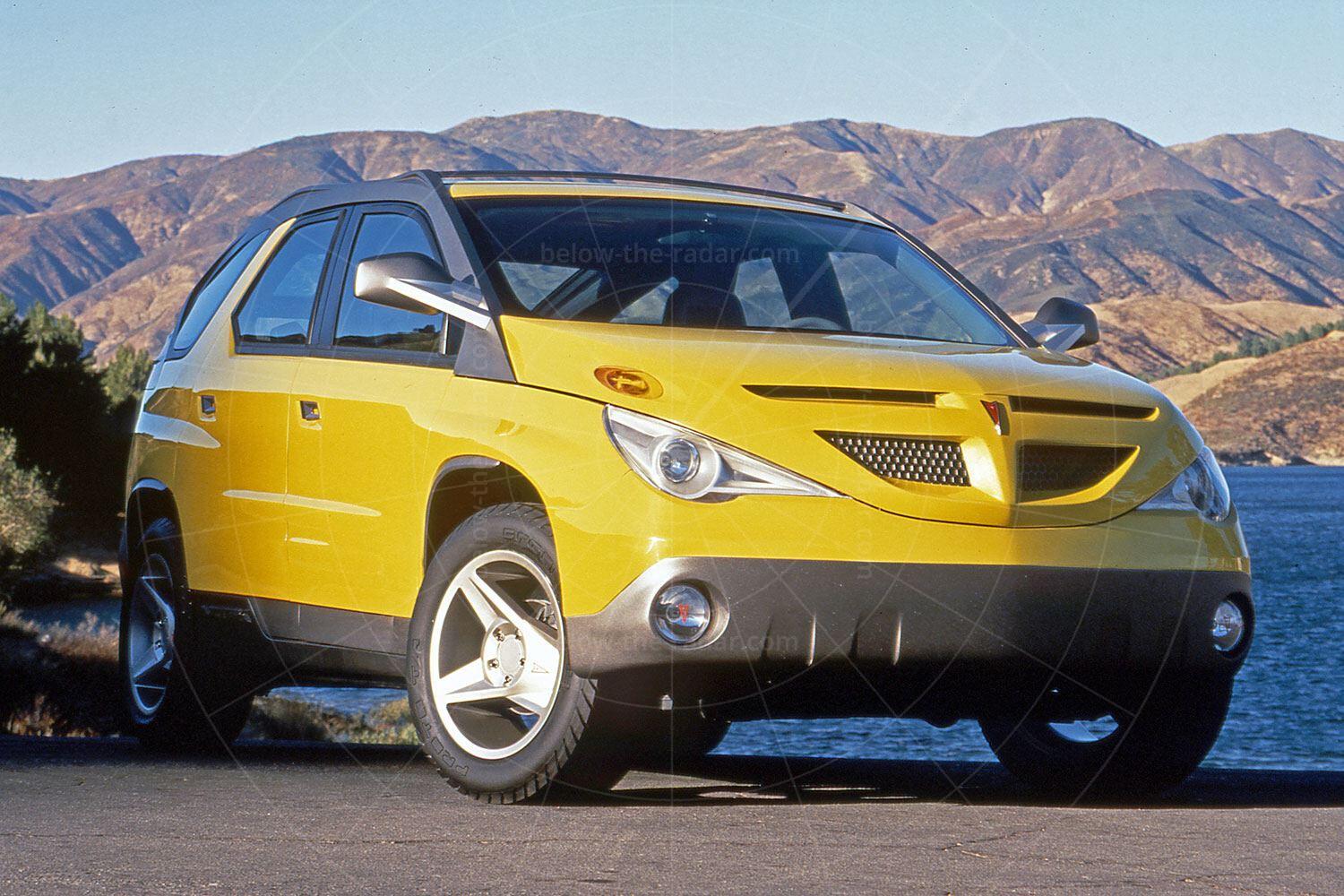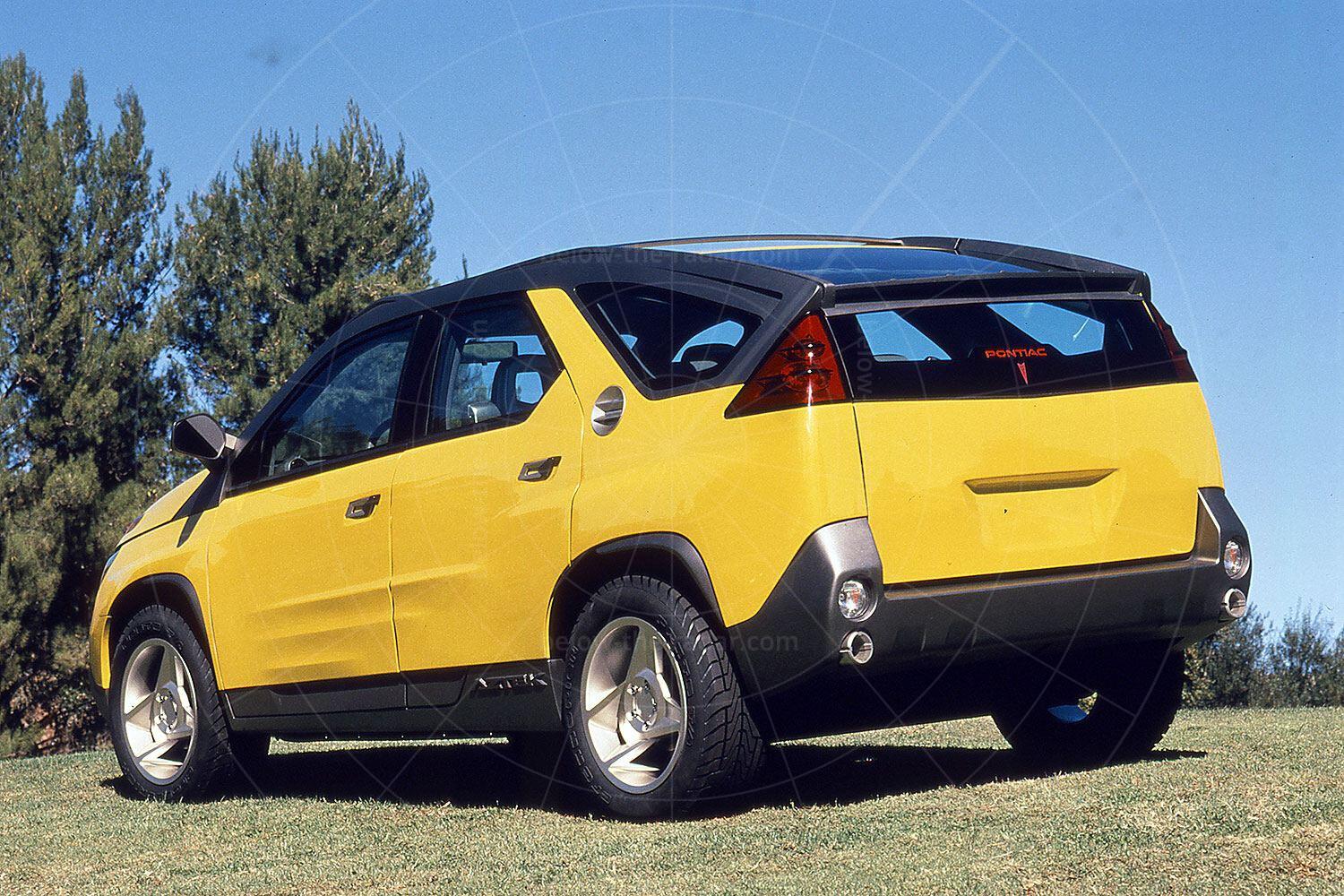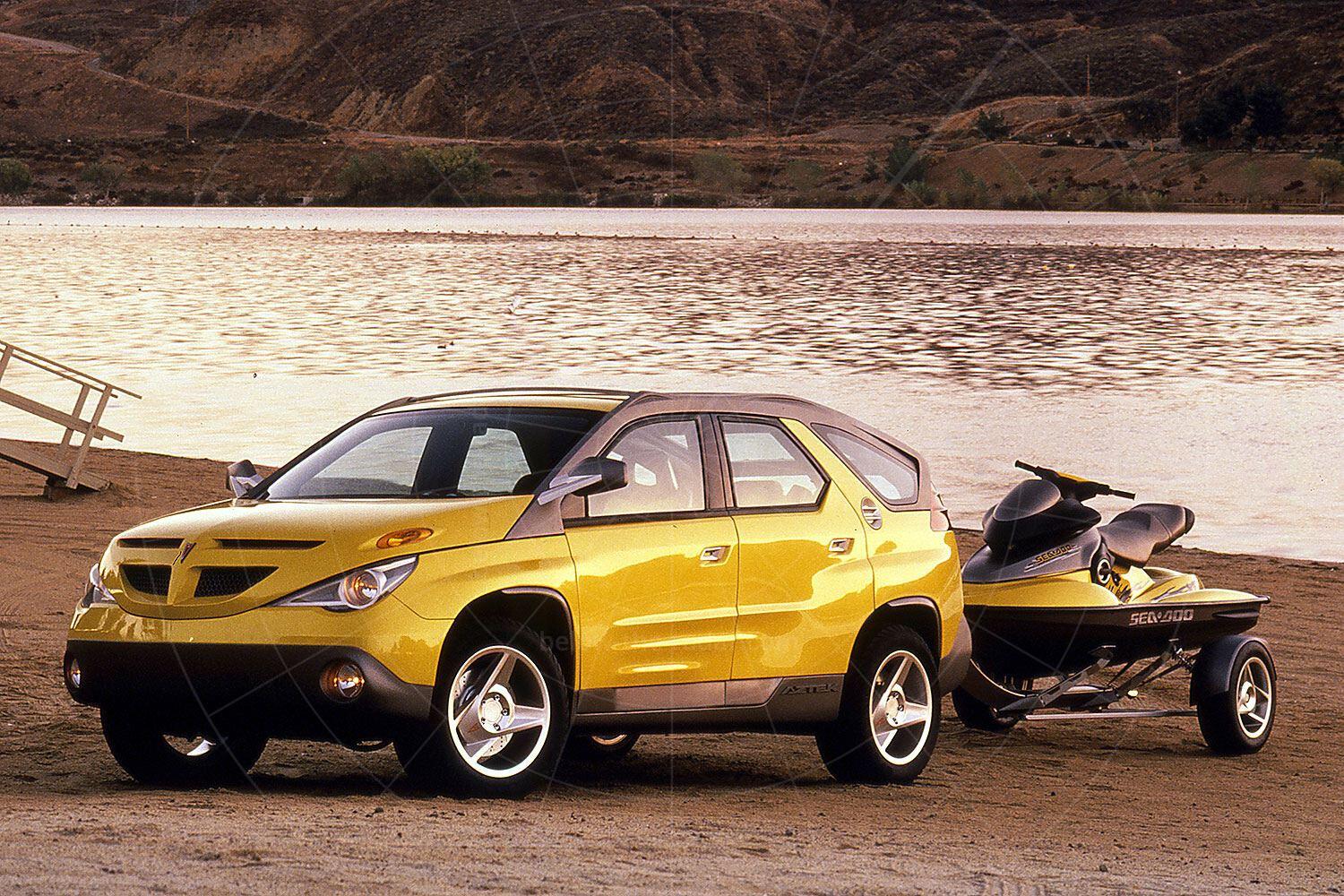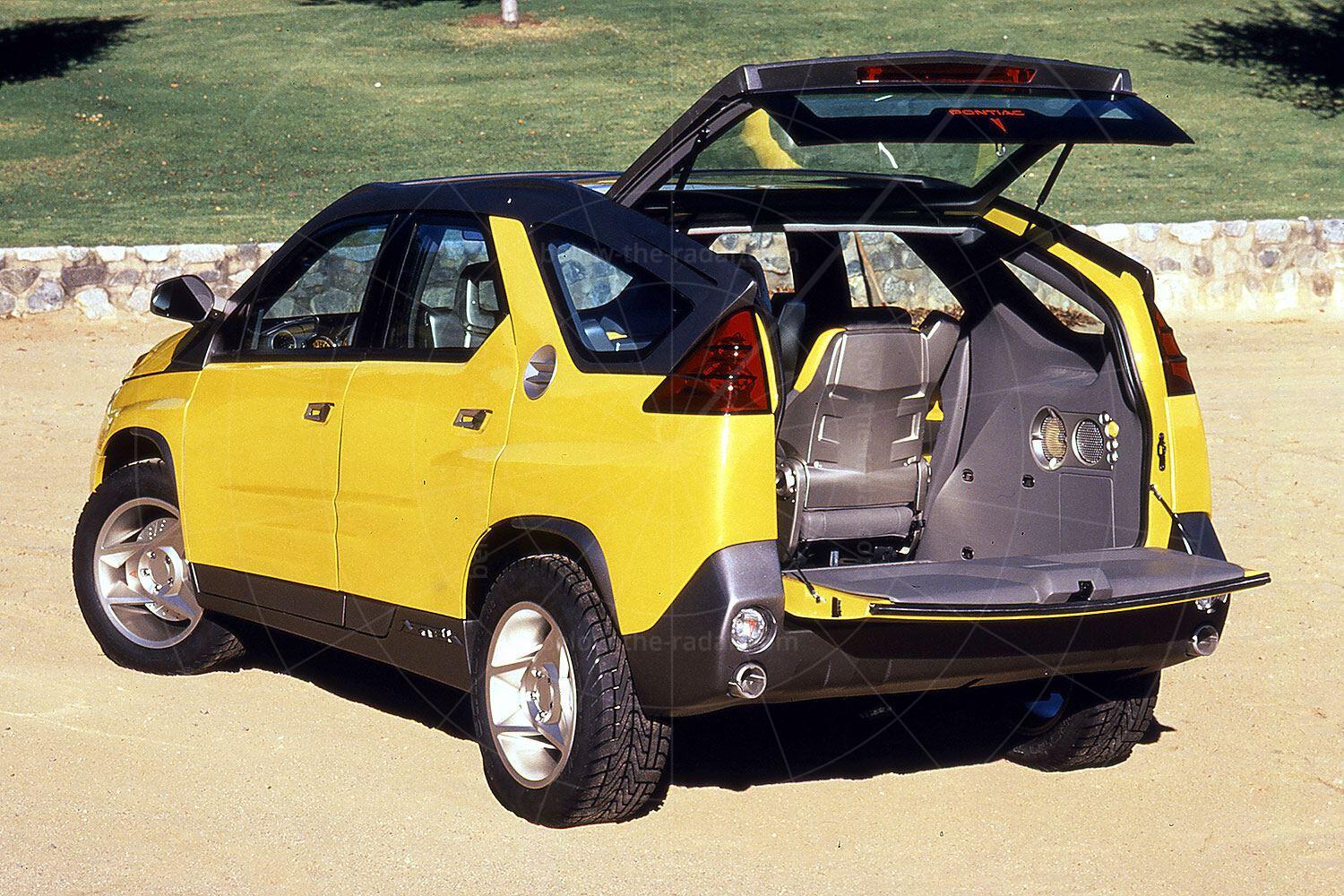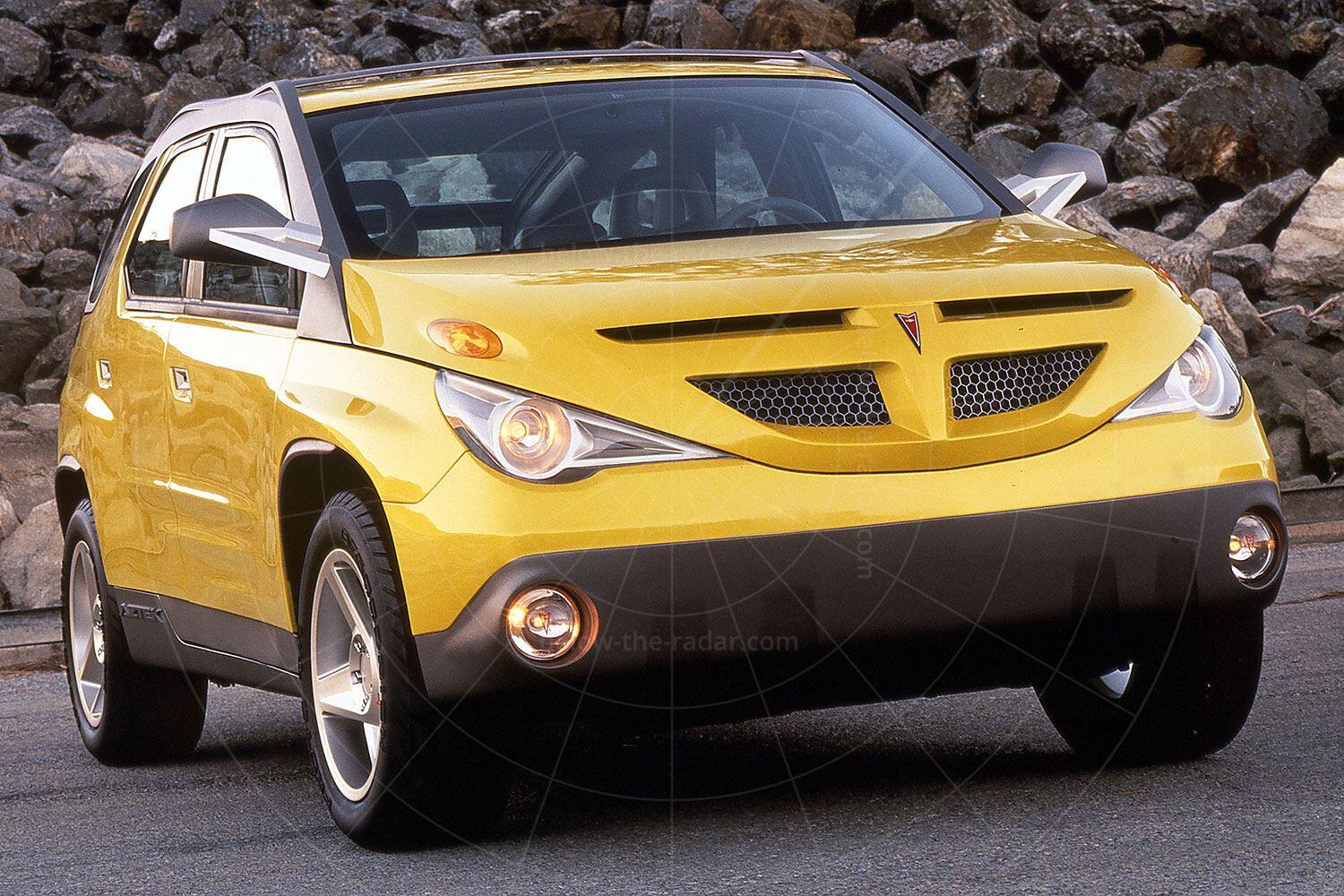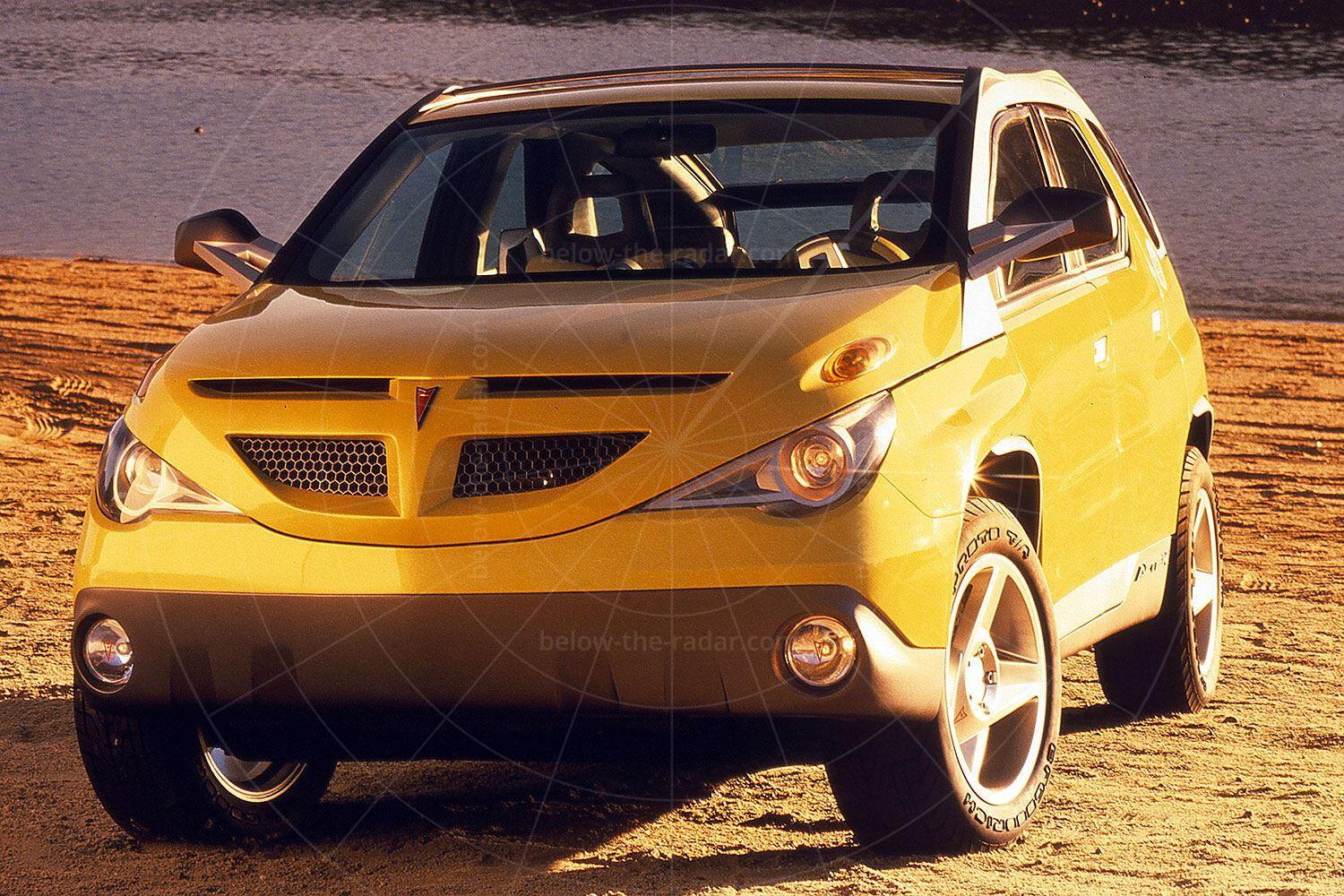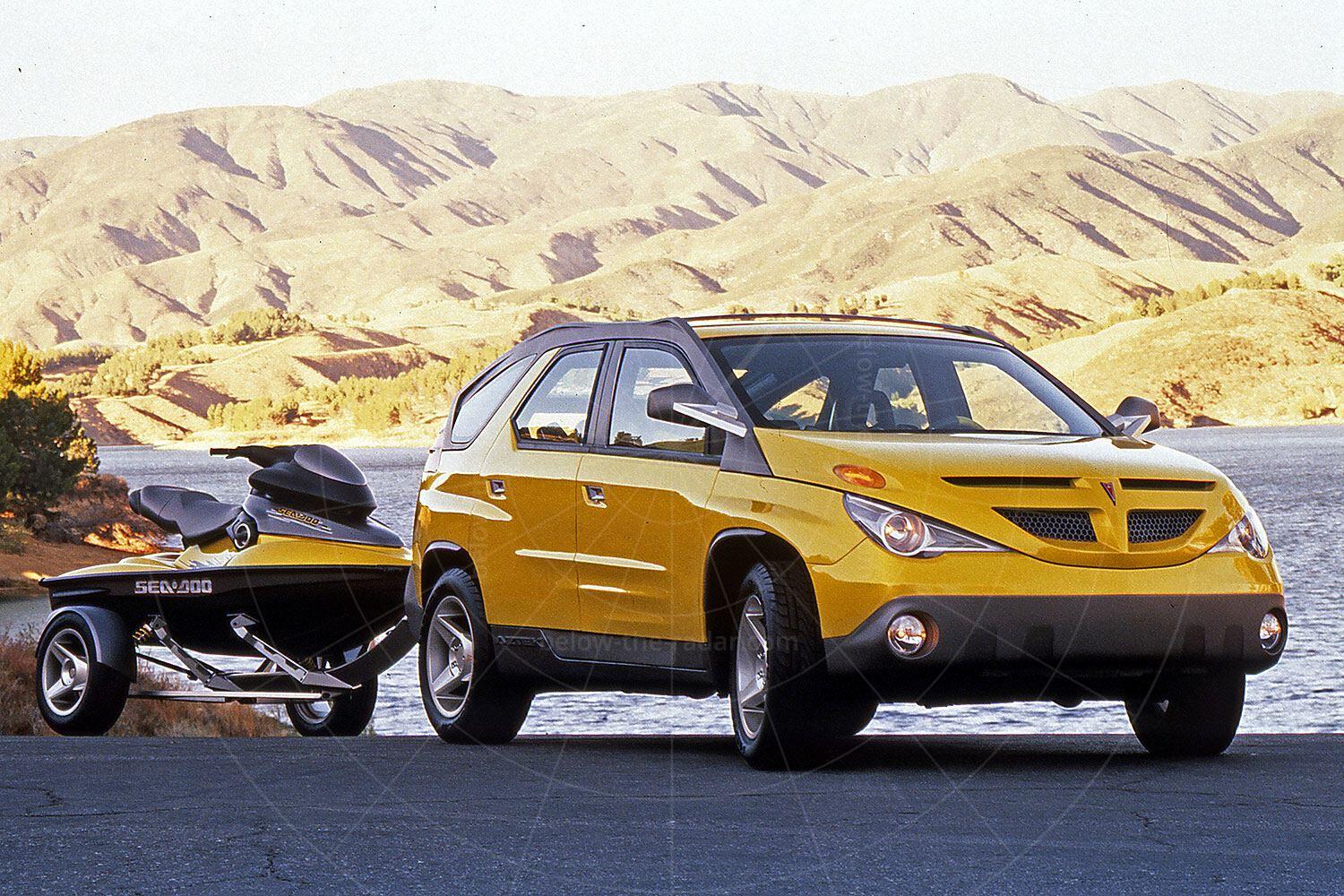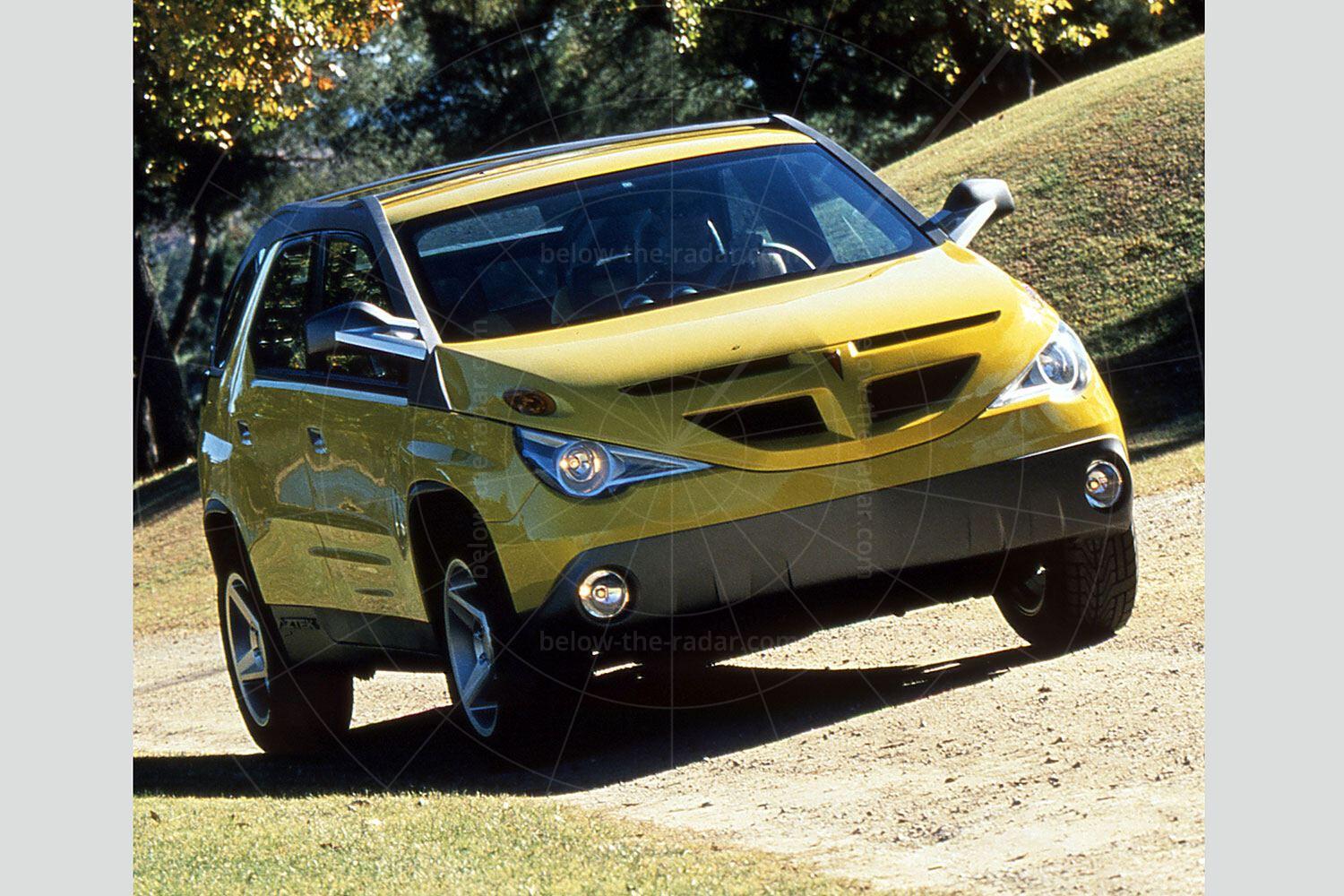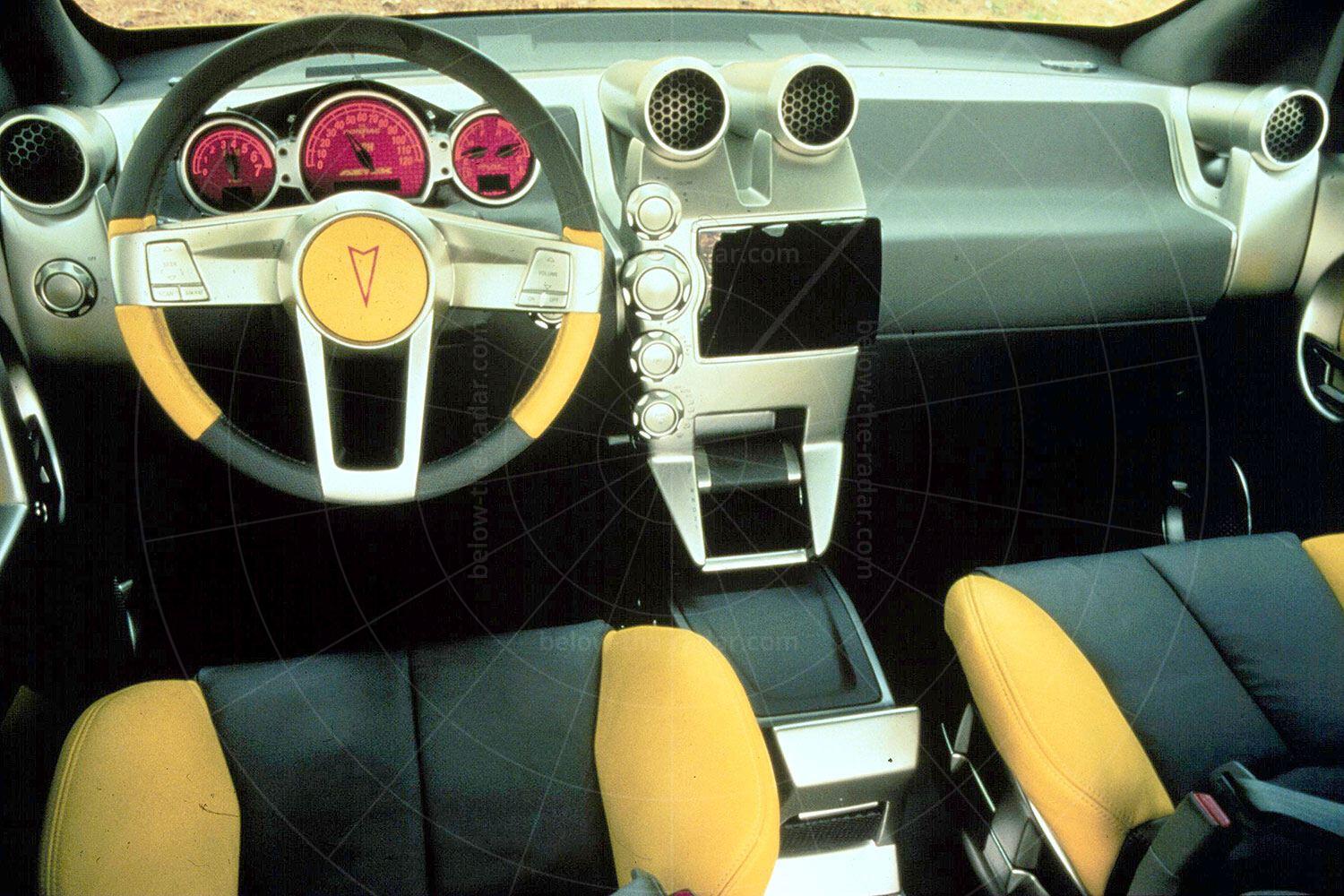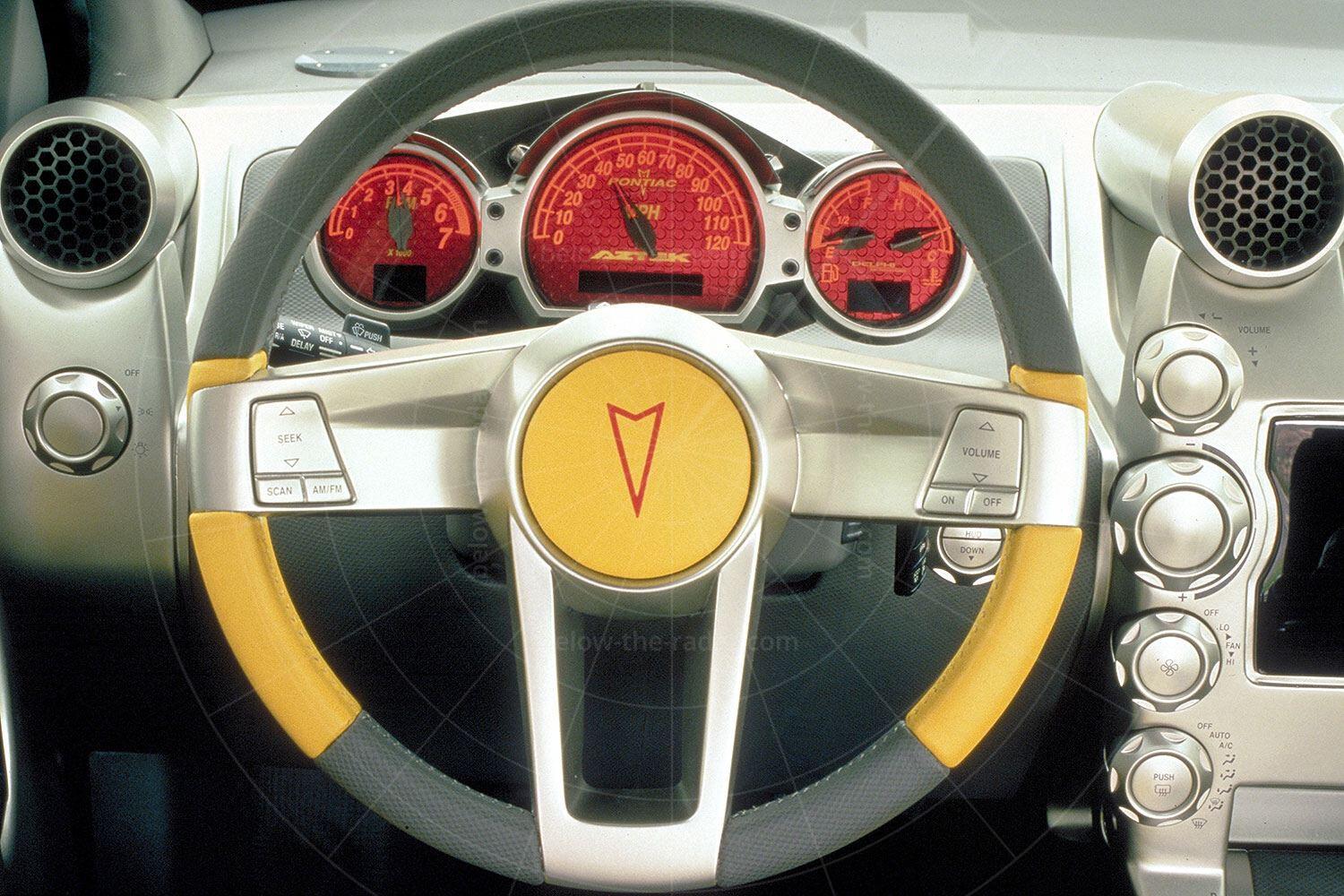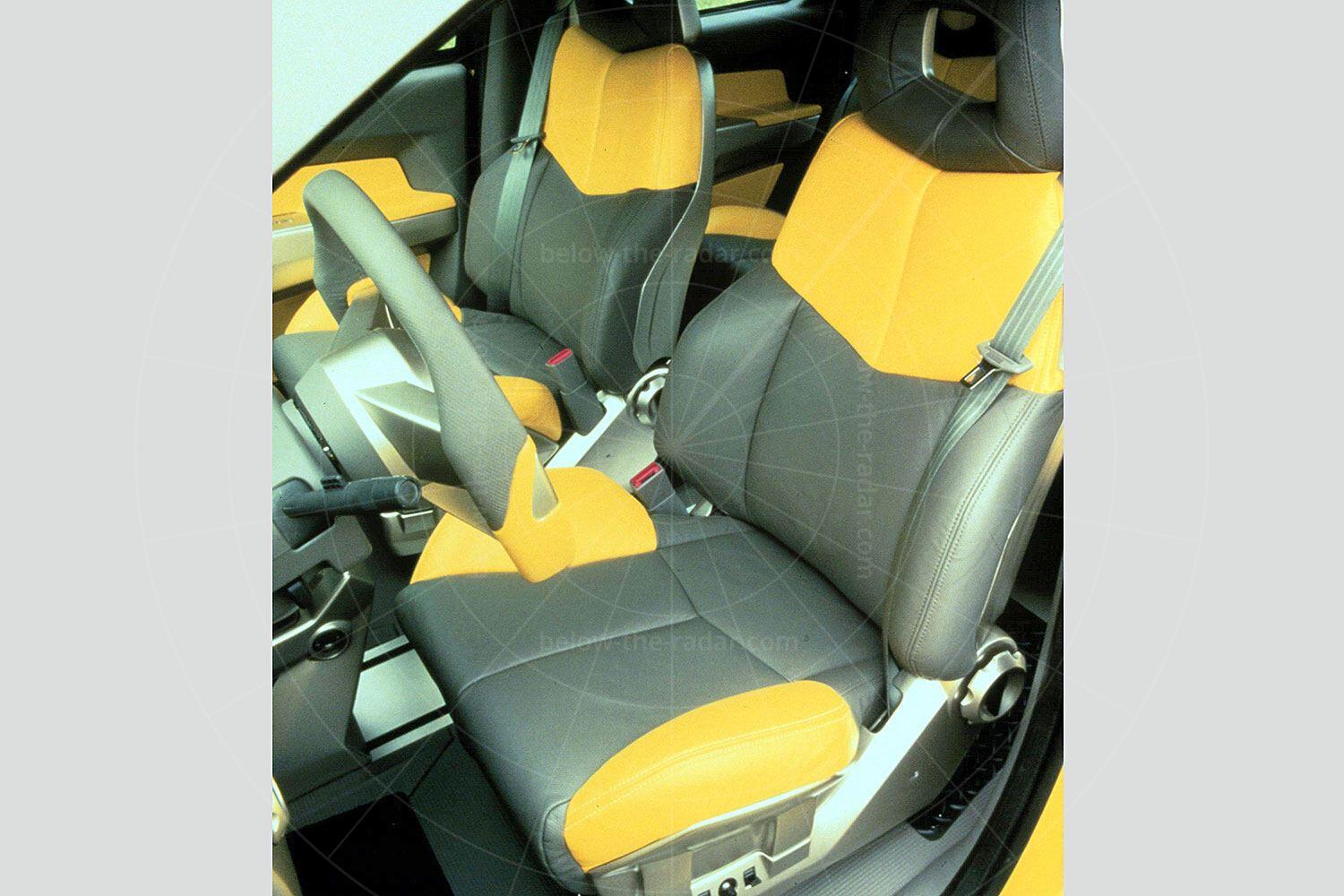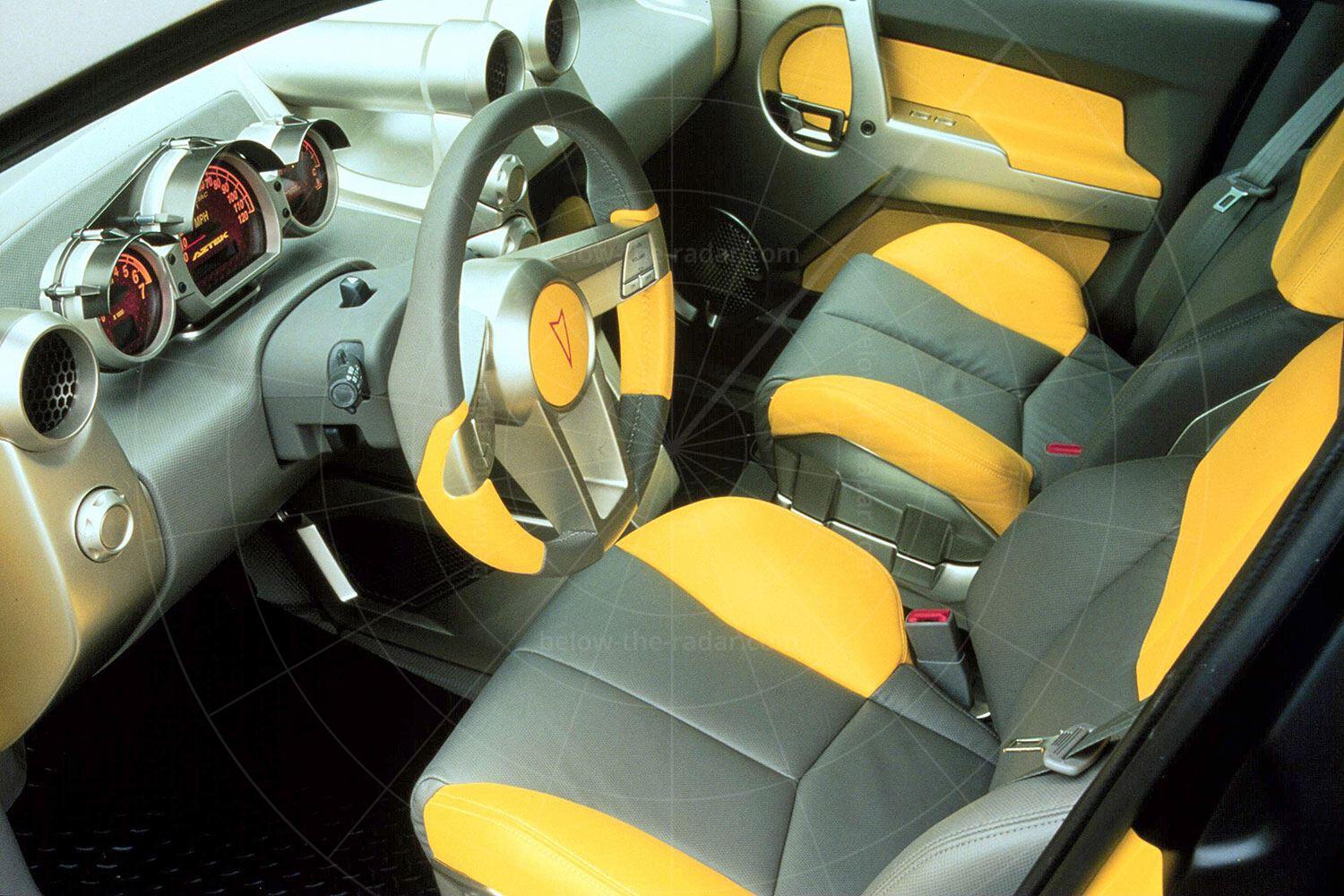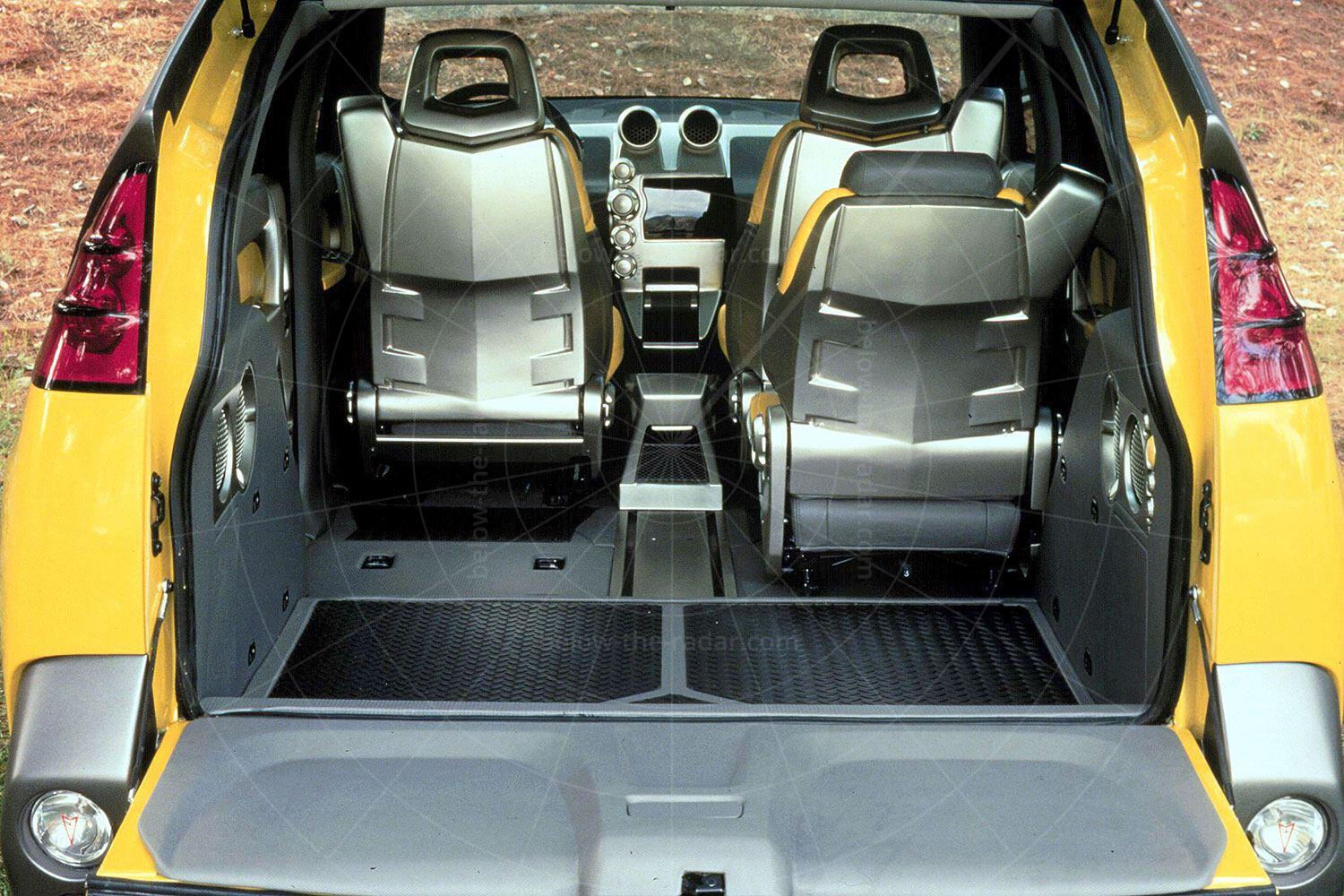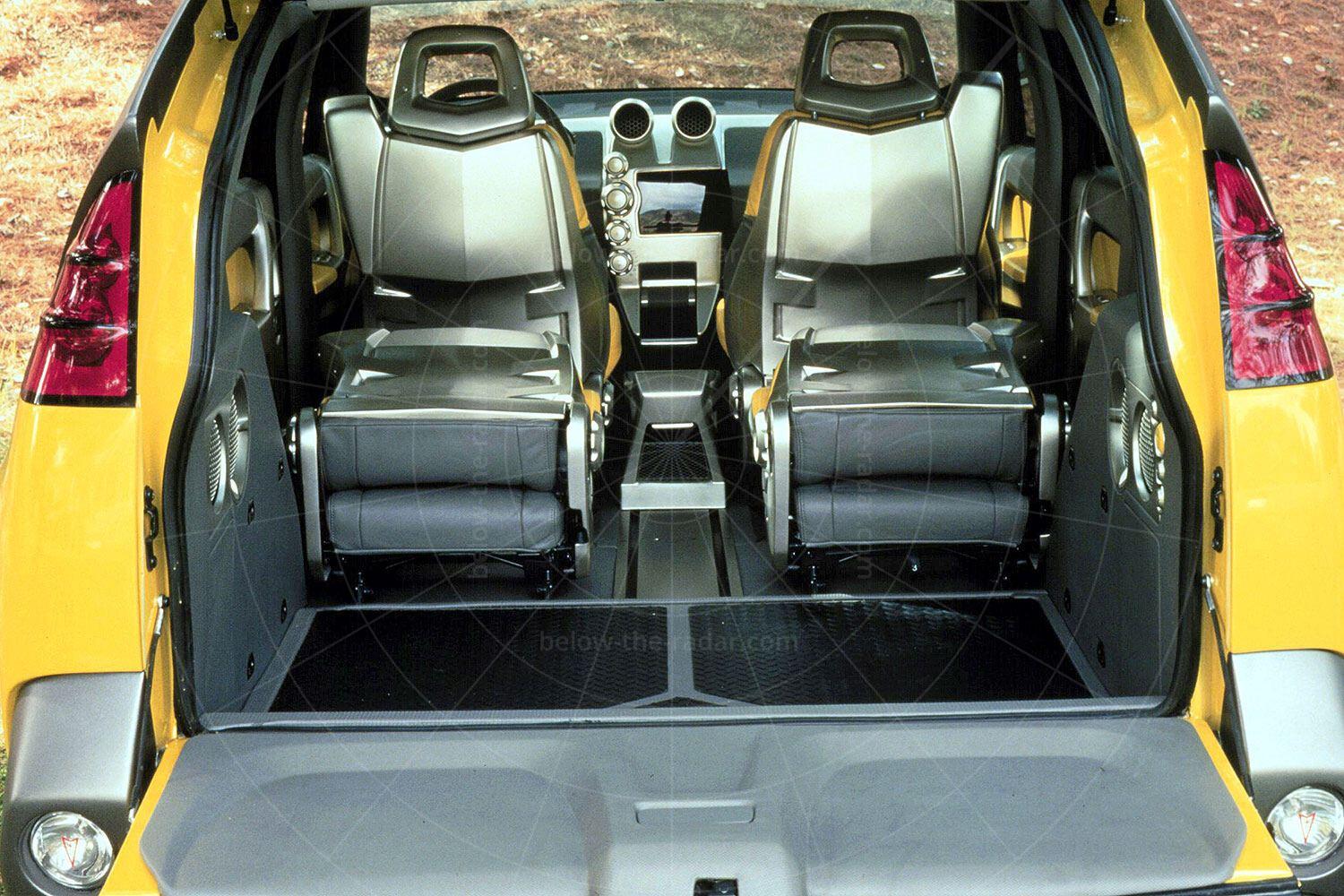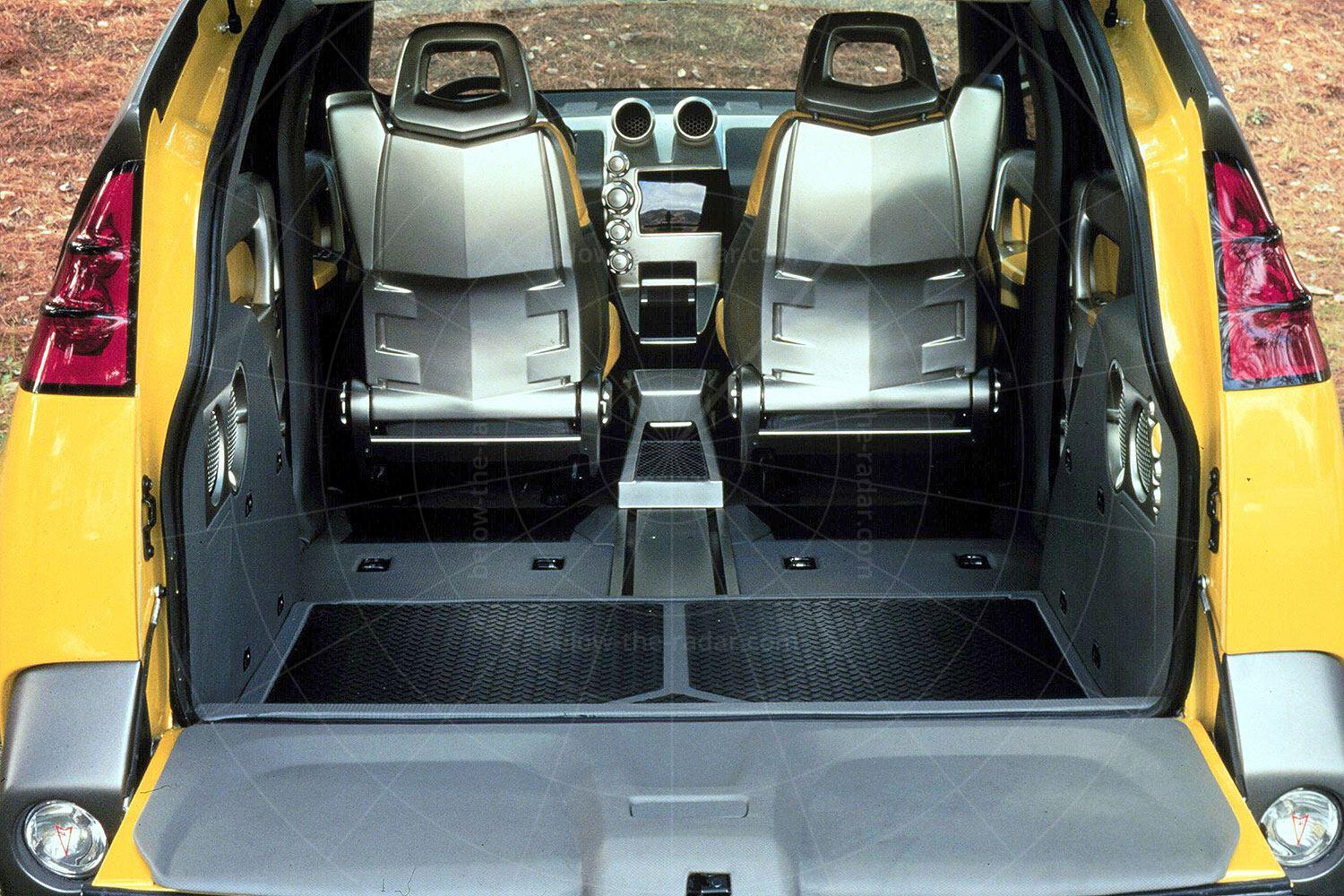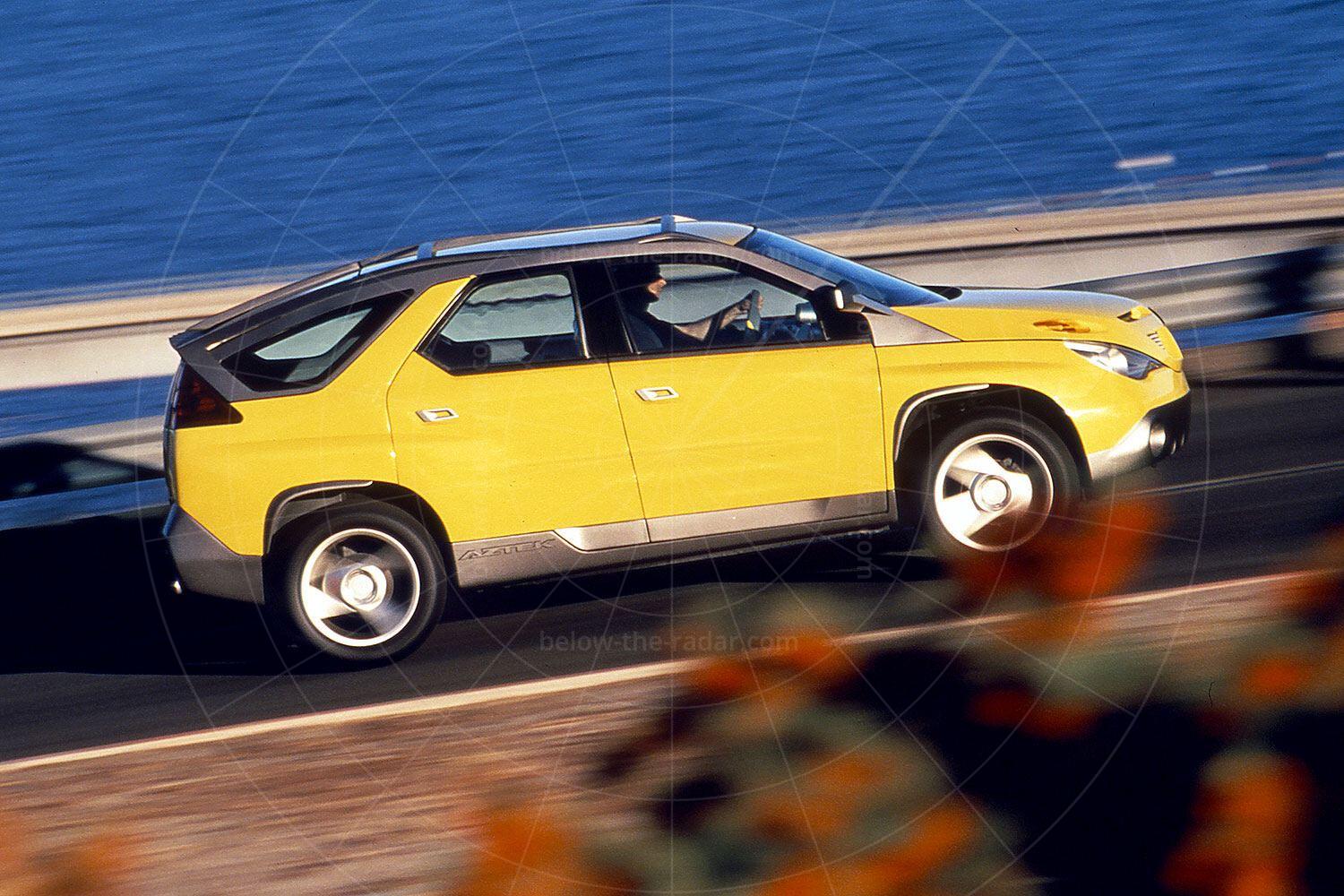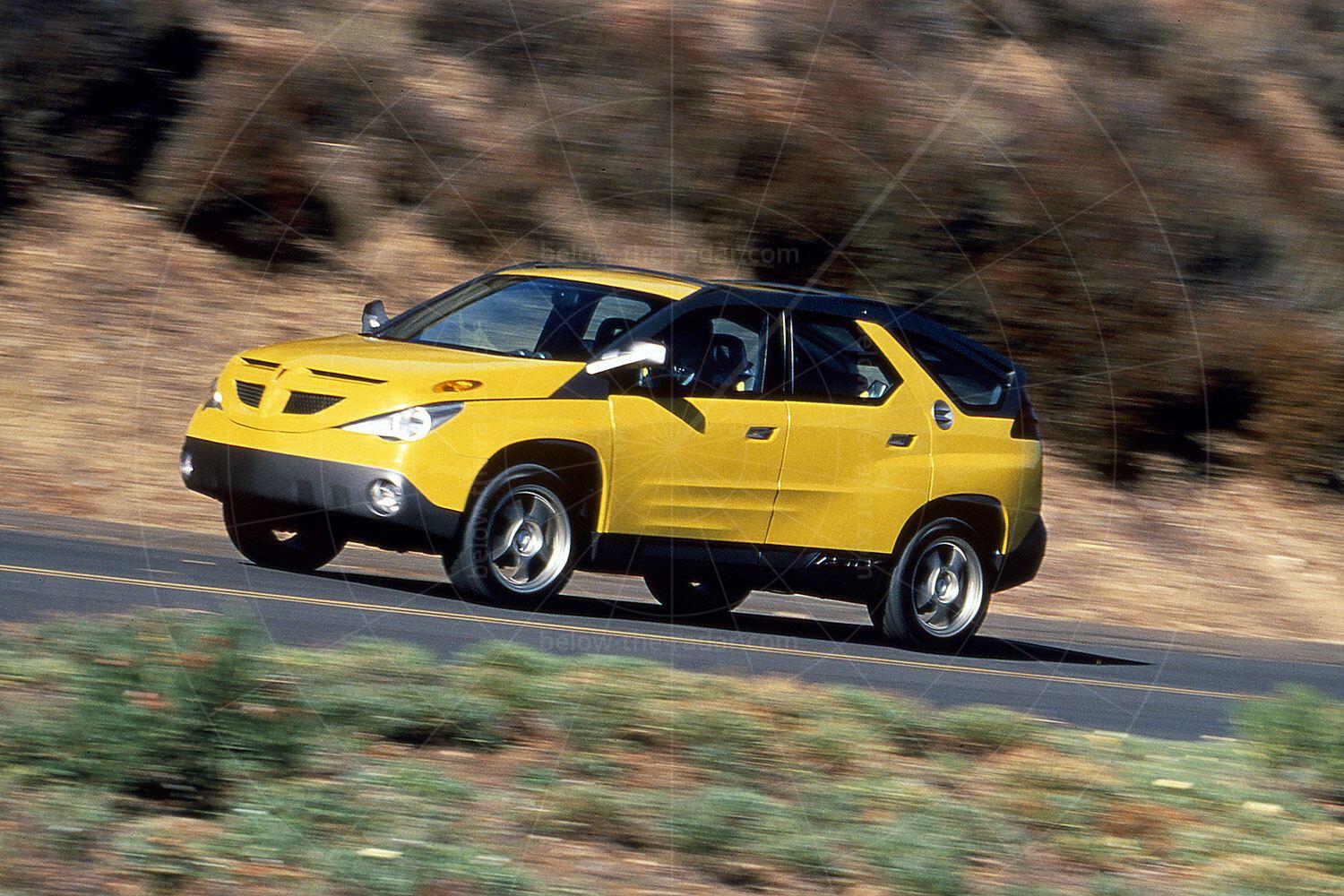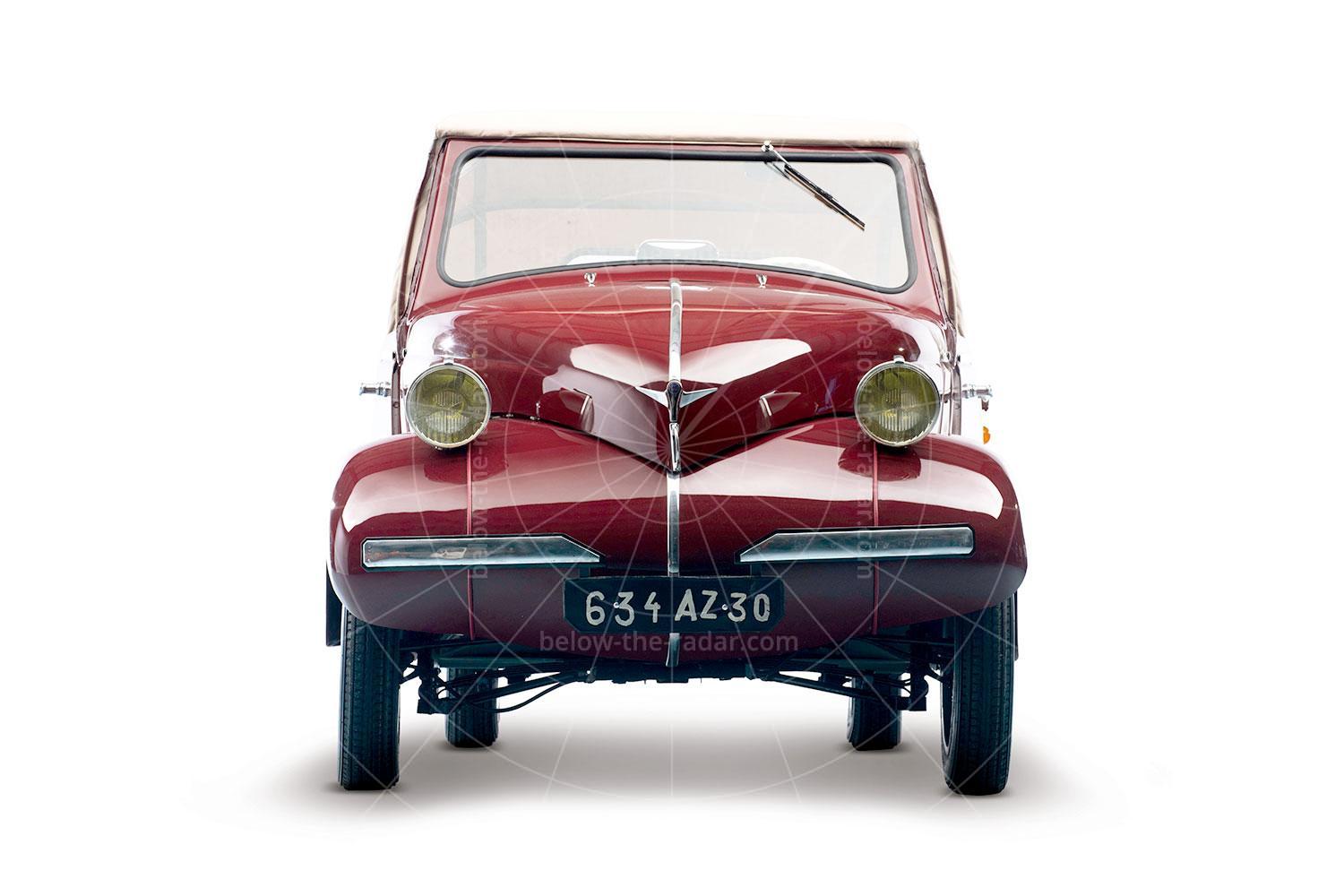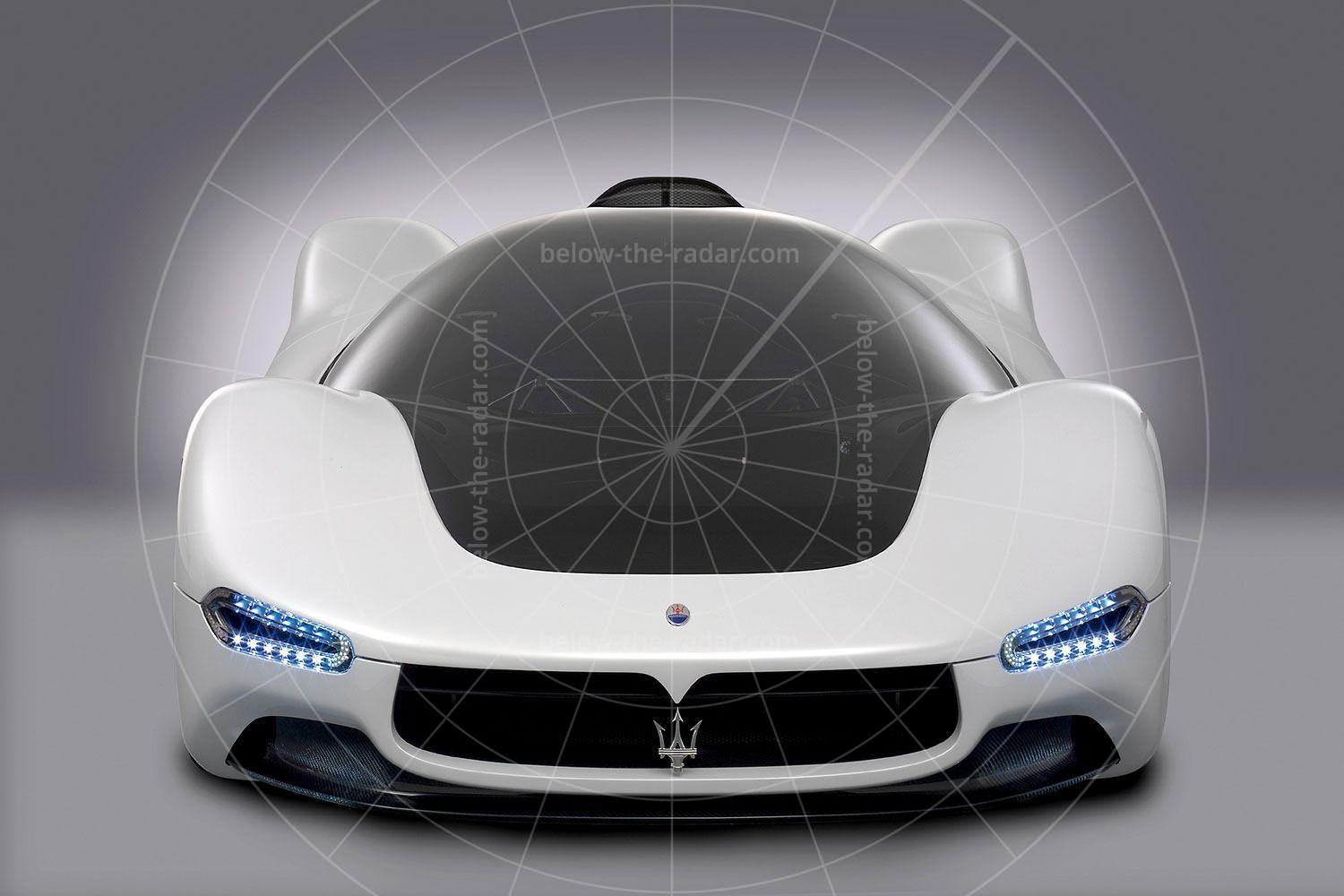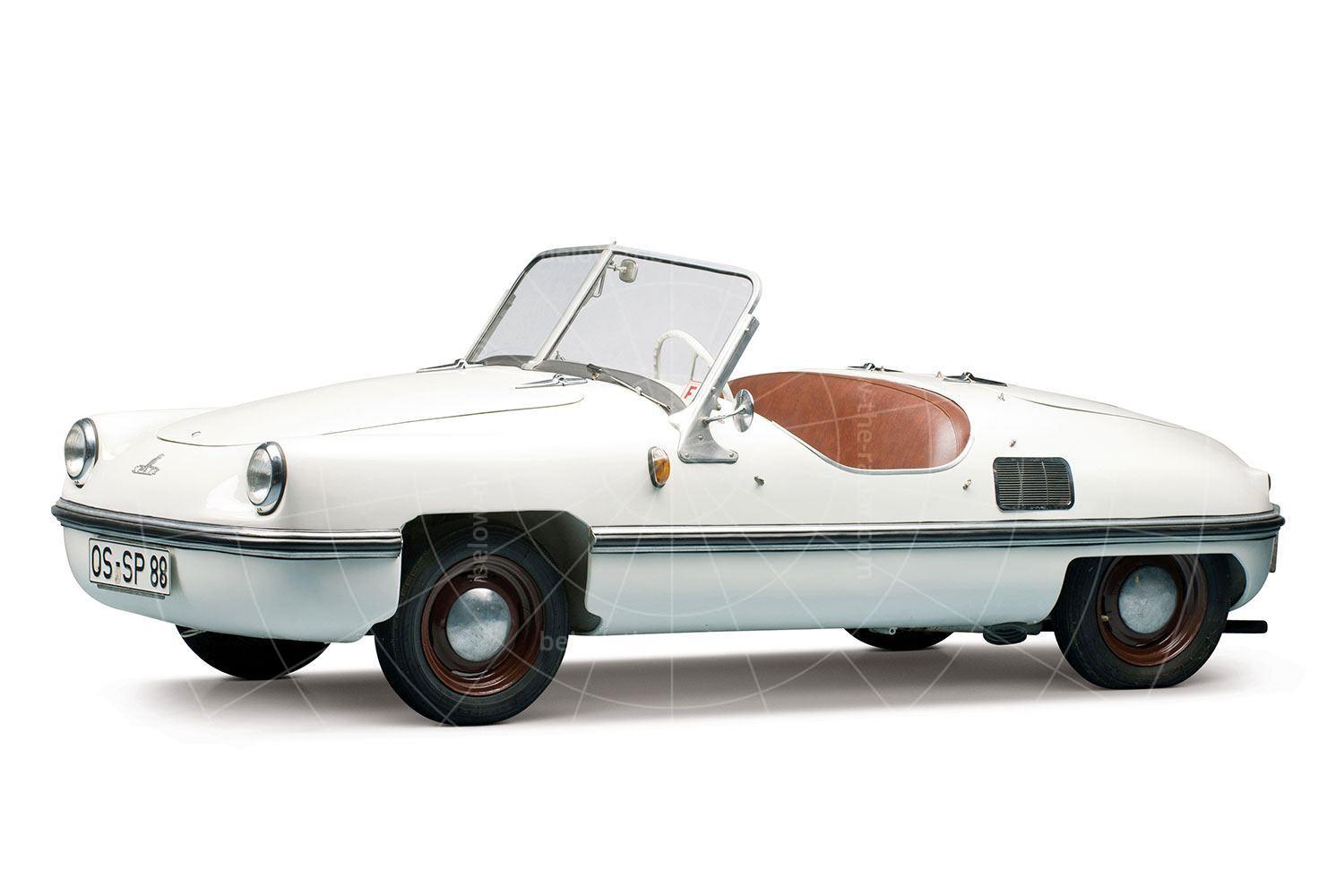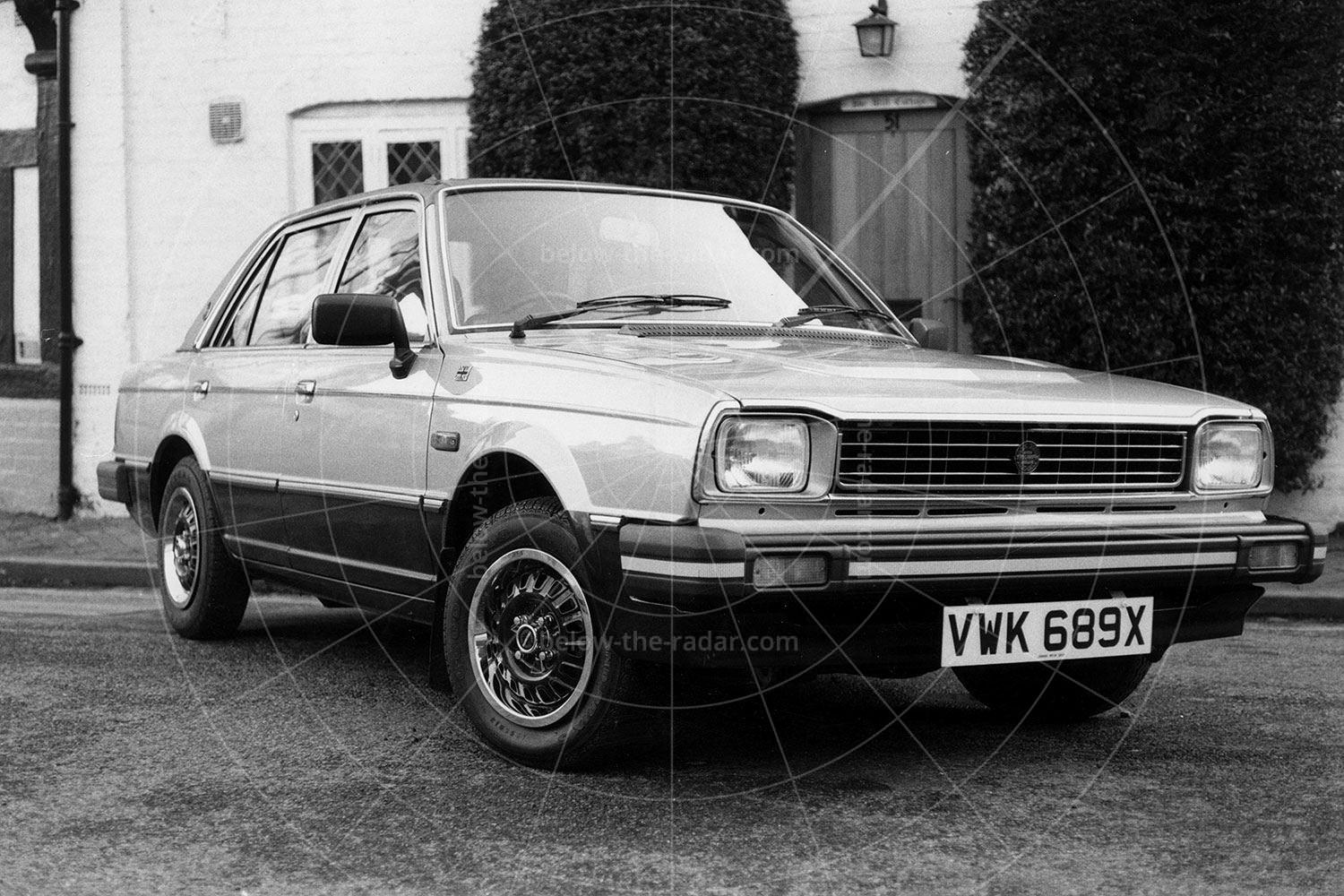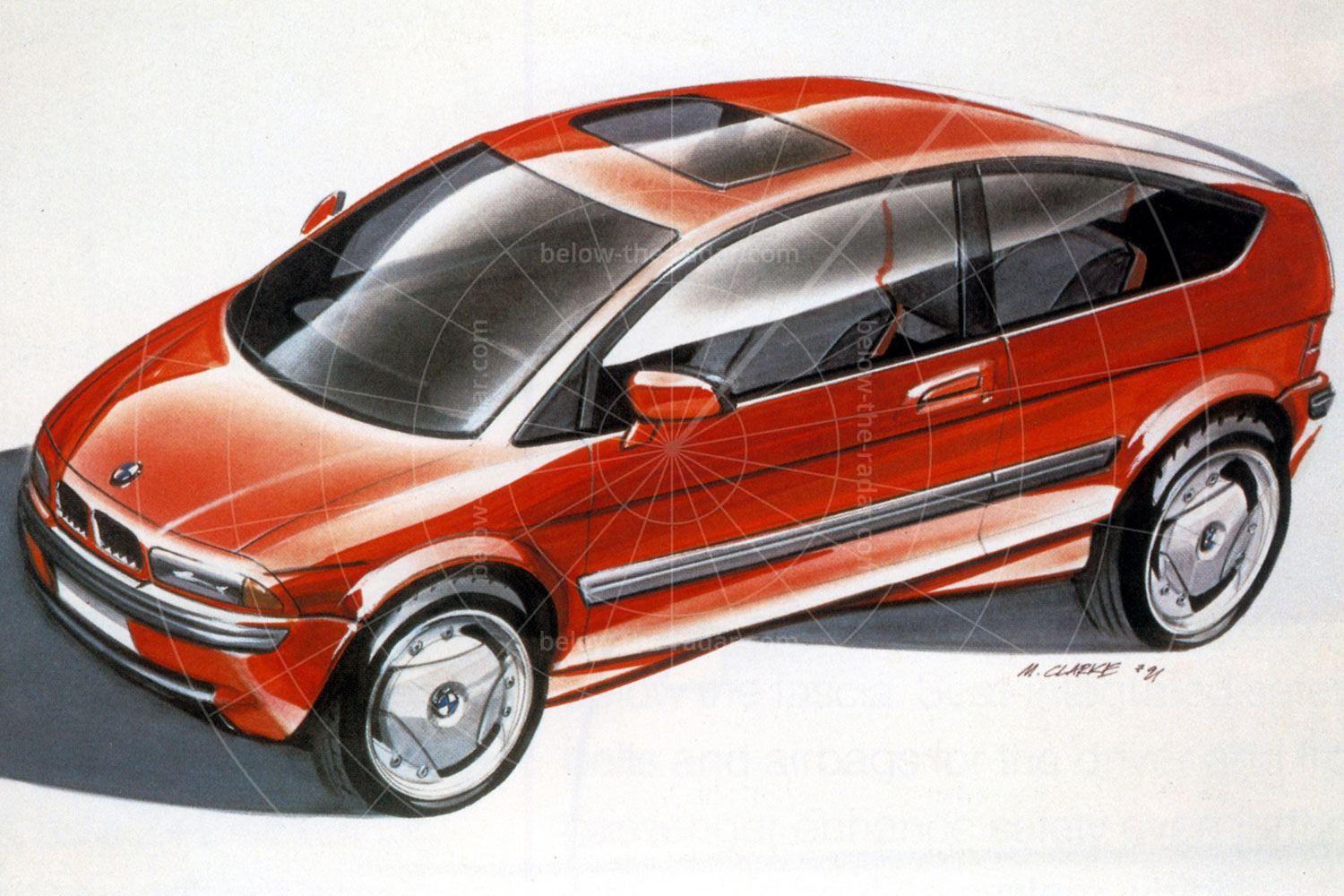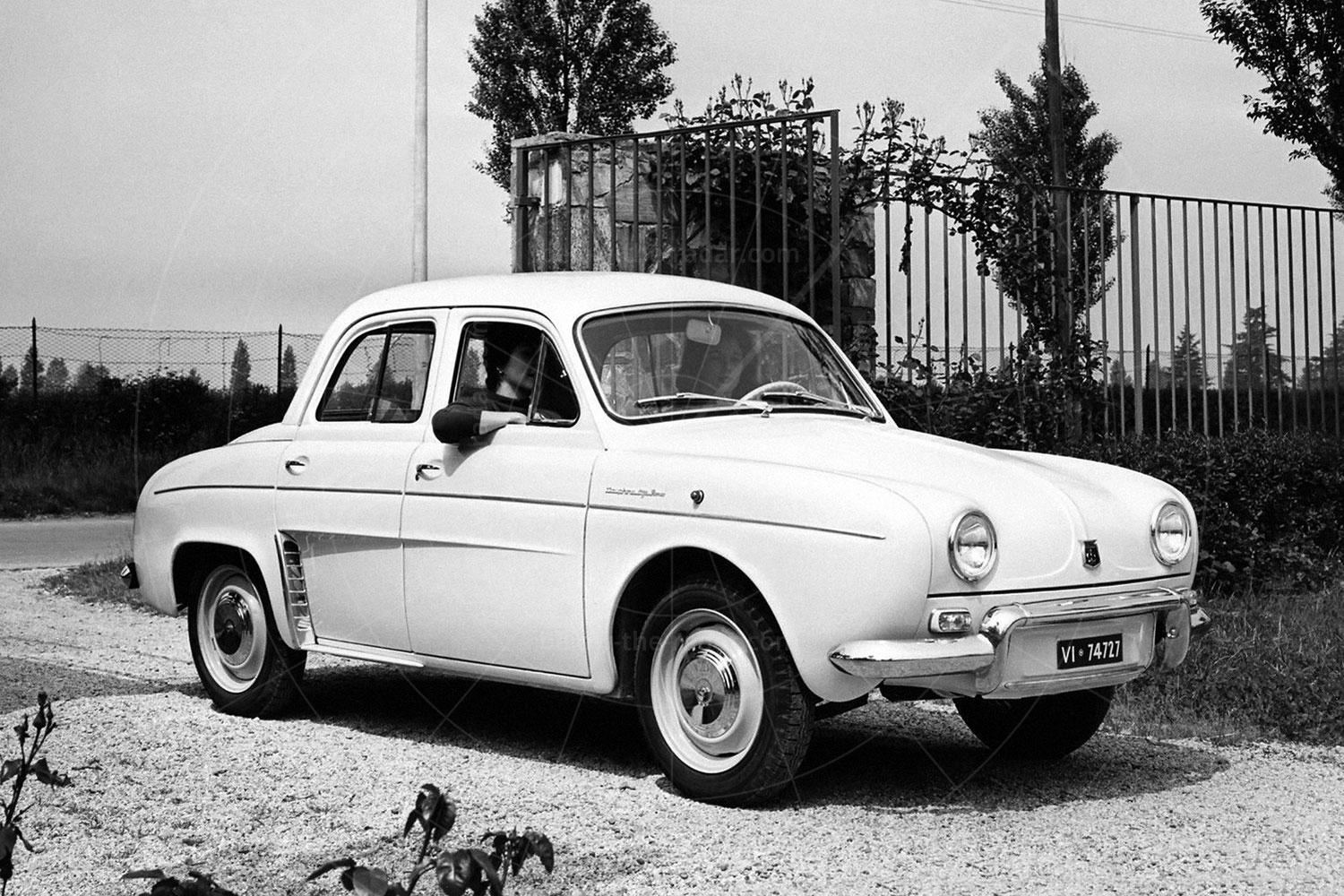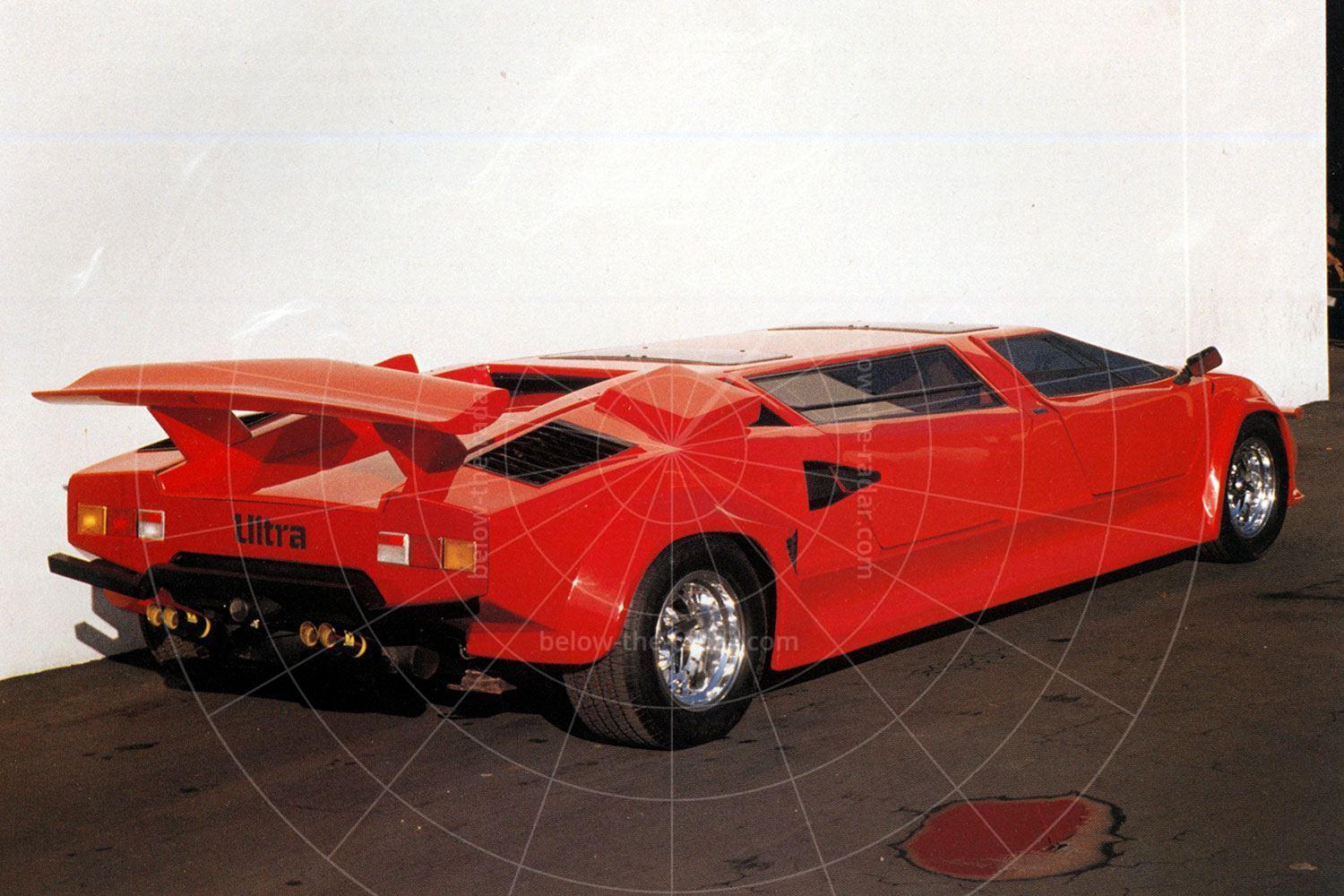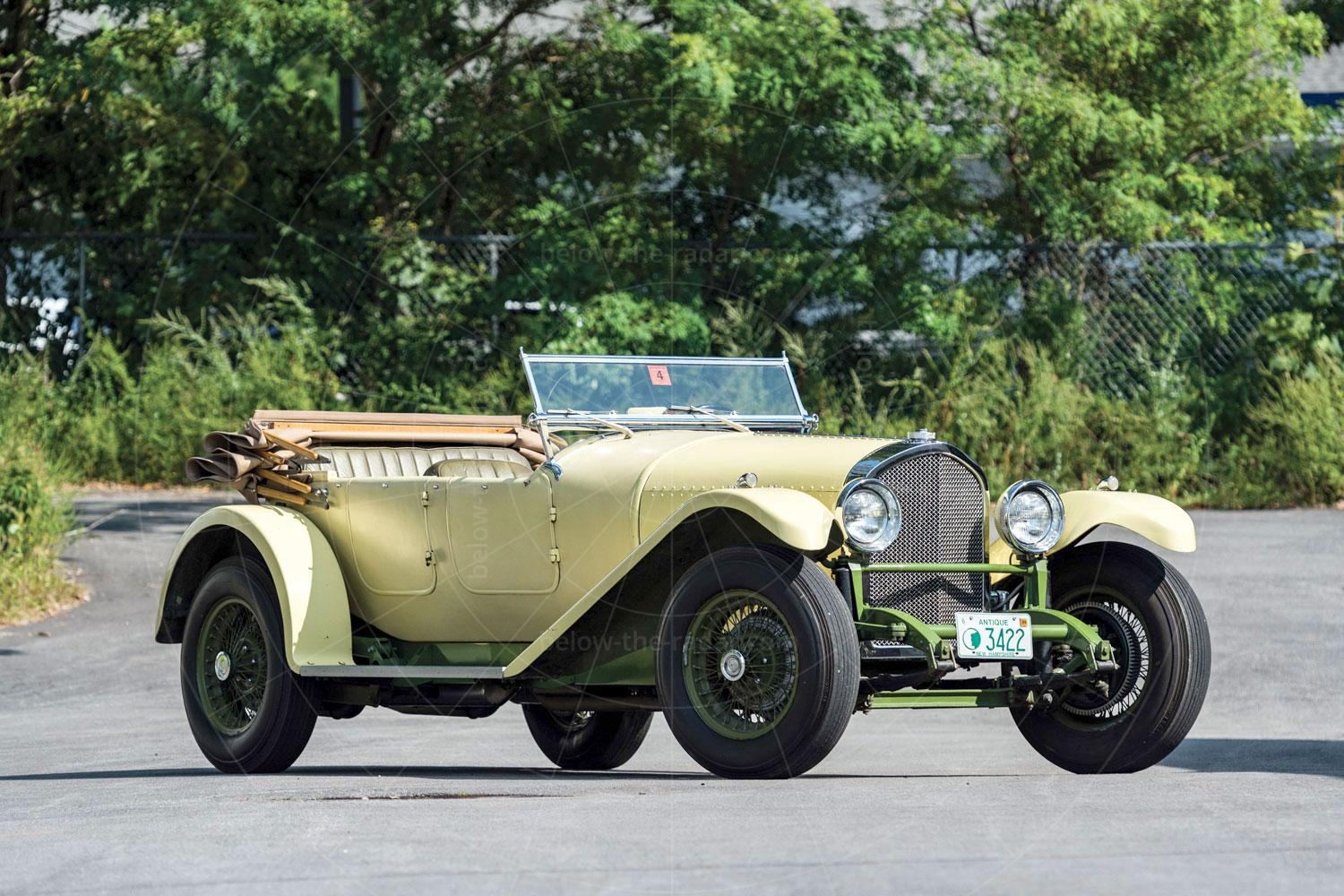With the Aztek, Pontiac tried to combine the best attributes of a mid-sized saloon, a van and a sport utility vehicle, the latter being the type of car which was becoming increasingly popular in the US at the time. So what a shame that Aztek designer Phil Kucera produced such a hideous looking car that few people could take it seriously. What was even more tragic was that the Aztek then went into production not long after being shown – with barely anything in terms of the exterior design being changed in the meantime.
Perhaps the reason for the Aztek’s aesthetics being so questionable was the fussy design, although it may have simply been the rather odd proportions. Although the nose of the car had to be recognisably Pontiac, the design language used could have been rather more cohesive without the car losing its corporate look. The split grille, Ram Air bonnet and cat’s eye headlamps marked the concept out as a Pontiac, but the bulbous, nose-heavy look made it look positively prehistoric.
The mass of slashes and blisters along the Aztek’s flanks also did little to hide its bulk; instead they just made it look messy and over-designed. If this doesn’t sound especially complimentary, compare my words with those of Pontiac, which reckoned that the Aztek featured ribs standing out at the side that “hinted at the solid, resilient strength of a lean, well-contoured athlete”. While marketing departments are very good at coming up with meaningless phrases and hype, this must take the biscuit for being completely unbelievable.
True to 21st century form, the Aztek was an off-roader that didn’t really have the ground clearance to do any proper off-roading, which was just as well as few owners would ever take the car anywhere near anything as demanding as a dirt track, never mind a full-blown assault course. Also in common with most other modern off-roaders, the Aztek’s monocoque construction was slanted in favour of on-road driving rather than tackling any rough stuff. The ladder frame underbody construction, as Pontiac called it, meant the Aztek would be less capable when tackling rock-strewn tracks, but at least it would be much more refined when cruising along metalled roads.
Although the Aztek looked as though it was fitted with four-wheel drive, only the front wheels were driven. Powering these via a four-speed automatic gearbox there was a 200bhp 3.4-litre V6 engine which also provided 225lb ft of torque. Naturally there were disc brakes all round, equipped with anti-lock circuitry and traction control ensured that if things got a bit slippery in the harbour while reversing the boat into the sea, all would not be lost.
As the exterior was so ugly, it was something of a relief that the interior was rather more palatable. The silver, black, grey and yellow colour scheme worked very well, with the yellow only really being used to lift things a bit. There was space for four occupants, although the rear seats could be folded up or removed with the minimum of fuss; versatility was the order of the day where the Aztek was concerned.
The dash was largely conventional and it worked all the better for it, although at night a three-dimensional look was assumed, which started to complicate things a bit. The circular gauges were joined by a liquid crystal display along with a dot matrix digital display, and in case this didn’t give the driver enough to think about there was also a head-up display which allowed the major functions to be monitored more easily.
This concept made its debut in 1999, and despite a lot of negativity around its design the Aztek was ready for delivery by summer 2000. General Motors reckoned it would shift 75,000 of them each year with 30,000 sales needed annually for the car to break even. In the end, by the time the car was phased out in 2005 just under 120,000 had been made. The Aztek's best year was 2002 when fewer than 28,000 found buyers, which just goes to show that taking risks with car design can sometimes pay off – but don't count on it.
| Vital statistics | |
|---|---|
| Debut | Detroit,1999 |
| Designer | Phil Kucera |
| Engine | Front-mounted, 3.4-litre, V6 |
| Transmission | 4-speed auto, front-wheel drive |
| Power | 200bhp |
| Top speed | 112mph |

